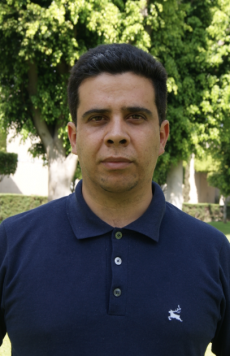- Observation of the Crab Nebula with the HAWC Gamma-Ray Observatory (25th).SN.(2017)
|
- Search for TeV Gamma-Ray Emission from Point-like Sources in the Inner Galactic Plane with a Partial Configuration of the HAWC Observatory (24th).DOI: 10.3847/0004-637X/817/1/3.(2015)
|
- HAWC Contributions to the 34th International Cosmic Ray Conference (ICRC2015) (26).SN.(2015)
|
- Search for gamma-rays from the unusually bright GRB 130427A with the HAWC Gamma-ray Observatory (18th).DOI: 10.1088/0004-637X/800/2/78.(2014)
|
- Observation of Small-scale Anisotropy in the Arrival Direction Distribution of TeV Cosmic Rays with HAWC (21st).DOI: 10.1088/0004-637X/796/2/108.(2014)
|
- VAMOS: A pathfinder for the HAWC gamma-ray observatory (30th).DOI: 10.1016/j.astropartphys.2014.08.004 .(2014)
|
- Milagro Limits and HAWC Sensitivity for the Rate-Density of Evaporating Primordial Black Holes (28th).DOI: 10.1016/j.astropartphys.2014.10.007 ·.(2014)
|
- The Sensitivity of HAWC to High-Mass Dark Matter Annihilations (23rd).DOI: 10.1103/PhysRevD.90.122002.(2014)
|
- Framework for Estimating Travel Time, Distance, Speed, and Street Segment Level of Service (LOS), based on GPS Data (3rd).DOI: 10.1016/j.protcy.2013.04.008.(2013)
|
- The HAWC Gamma-Ray Observatory: Design, Calibration, and Operation (23rd).SN.(2013)
|
- The HAWC Gamma-Ray Observatory: Dark Matter, Cosmology, and Fundamental Physics (23rd).SN.(2013)
|
- The HAWC Gamma-Ray Observatory: Observations of Cosmic Rays (23rd).SN.(2013)
|
- The HAWC Gamma-Ray Observatory: Sensitivity to Steady and Transient Sources of Gamma Rays (23rd).SN.(2013)
|
- Sensitivity of the High Altitude Water Cherenkov Detector to Sources of Multi-TeV Gamma Rays (21st).DOI: 10.1016/j.astropartphys.2013.08.002.(2013)
|
- PMS and ZAMS stars associated with the dark cloud LDN 1655 (4th).DOI: 10.1016/j.newast.2012.06.002.(2013)
|
- The High Altitude Water Čerenkov (HAWC) TeV Gamma Ray Observatory (1st).DOI: 10.1007/978-3-642-35410-6_32.(2013)
|
- Optics and the mechanical system of the 62-cm telescope at the Severo Díaz Galindo Observatory in Guadalajara, Jalisco, México (1st).DOI: 10.1117/12.926509.(2012)
|
- Spectral Optical Monitoring of the Narrow Line Seyfert 1 galaxy Ark 564 (17th).DOI: 10.1088/0067-0049/202/1/10 .(2012)
|
- On the sensitivity of the HAWC observatory to gamma-ray bursts (33rd).SN.(2012)
|
- About pulsars dynamical evolution (3rd).SN.(2011)
|
- On the sensitivity of the HAWC observatory to gamma-ray bursts (34th).DOI: 10.1016/j.astropartphys.2012.02.001 .(2011)
|
- Numerical models for the 19th century outbursts of eta Carinae (7th).SN.(2011)
|
- Insights Into the High-Energy Gamma-ray Emission of Markarian 501 from Extensive Multifrequency Observations in the Fermi Era (92nd).DOI: 10.17877/DE290R-4295 .(2010)
|
- The Hot Molecular Core of G12.21-0.10: NH3(4, 4) Observations (1st).DOI: 10.1017/S1743921310003030.(2010)
|
- Spectral optical monitoring of 3C 390.3 in 1995–2007 (14th).DOI: 10.1051/0004-6361/201016317.(2010)
|
- Spectral optical monitoring of 3C390.3 in 1995-2007: I. Light curves and flux variation of the continuum and broad lines.DOI: 10.1051/0004-6361/201014118.(2010)
|
- Revisiting 2D Numerical Models for the 19th century outbursts of $\eta$ Carinae (8th).DOI: 10.1111/j.1365-2966.2009.15950.x .(2009)
|
- Optical characterization of the 62-cm telescope at the Severo Diaz Galindo Observatory in Guadalajara (2nd).DOI: 10.1117/12.849194.(2009)
|
- The unusual interacting pair of galaxies IC 3481 and IC 3481A: An optical-NIR photometric and spectroscopic analysis (3rd).DOI: 10.1016/j.newast.2009.02.004.(2009)
|
- Spitzer--IRAC Imagery and Photometry of Ultracompact HII Regions With Extended Emission (1st).SN.(2009)
|
- A CCD Photometric and Morphological Study of the Extended Halo and Filaments of ESO 383-45: A Galaxy Undergoing Ram Pressure Stripping, or a Tidal Merger Remnant? (2nd).DOI: 10.1086/429269.(2008)
|
- Lenticular galaxies in the process of evolution (4th).DOI: 10.1017/S1743921308017481.(2008)
|
- The inner galactic structure traced by molecular clouds associated with ultra-compact hii regions (3rd).SN.(2008)
|
- U Geminorum: A Test Case for Orbital Parameter Determination (2nd).DOI: 10.1086/518562 .(2007)
|
- The Extended Emission of Ultracompact HII Regions: An Overview and New Observations (1st).DOI: 10.1007/978-0-387-87621-4_26 .(2007)
|
- The composite form of the supernova remnant 3C 400.2: Two interacting supernova remnants or a single supernova remnant with a blow-out? (2nd).SN.(2006)
|
- Simulated X‐ray emission from a single‐explosion model for a supernova remnant 3C 400.2 (2nd).DOI: 10.1111/j.1365-2966.2006.10652.x.(2006)
|
- H alpha Fabry-Perot Study in the Orion Nebula (M 42): Protoplanetary Disks (1st).SN.(2003)
|
- Revista Mexicana de Astronoma y Astrofsica, 39, 127--137 (2003) (1).SN.(2003)
|
- The Radial Velocity Profiles of some Proplyds in the Orion Nebula (4th).SN.(2003)
|
- The Supernova Remnant 3C 400.2: Kinematics of its Ionized Gas and Theoretical Results (4th).SN.(2003)
|
- Protoplanetary Disks in the Orion Nebula: An H$\alpha$ Fabry-Perot study and Astrobiological Aspects (1st).SN.(2002)
|
- RevMexAA (Serie de Conferencias), 12, 93--93 (2002) (1st).SN.(2002)
|
- Laser laboratory experiments, observations and numerical simulations of strong explosions (4th).SN.(2002)
|
- An Halpha Radial Velocity Report of Five LV Proplyds in the Orion Nebula (1st).SN.(2002)
|
- Is the supernova remnant 3c400.2 The result of a single supernova explosion? (1st).SN.(2002)
|
- Optically thick giant H II regions with decreasing density gradients in three barred galaxies (2nd).SN.(2002)
|
- Hα Fabry-Perot Study in the Orion Nebula (M 42): Protoplanetary Disks.SN.(2002)
|
- Fabry-Perot kinematics of HH 202-204 in the orion nebula: Are they part of a big bipolar outflow? (3rd).SN.(2002)
|
- RevMexAA (Serie de Conferencias), 10, 45--48 (2001) (6th).SN.(2002)
|
- A single explosion model for the supernova remnant 3C 400.2 (1st).DOI: 10.1051/0004-6361:20011116.(2001)
|
- Fabry-Perot Kinematics of HH 202, 203-204 in the Orion Nebula: Are they part of a Big Bipolar Outflow? (2nd).SN.(2001)
|
- Kinematics of Herbig-Haro Objects and Jets in the Orion Nebula (2nd).DOI: 10.1086/323303 .(2001)
|
- Pressure and density gradients in H II Regions (5th).DOI: 10.1023/A:1012779627430.(2001)
|
- Decreasing density gradients in circumnuclear HII regions of barred galaxies NGC 1022, NGC 1326, and NGC 4314 (3rd).DOI: 10.1086/317189 .(2000)
|
- Optically Thick HII Regions With Density Gradients in Barred Galaxies (1st).SN.(2000)
|
- A New Deep North-West CCD Halpha Mosaic Images Of The Supernova Remnant 3C400.2 (1st).SN.(2000)
|
- RevMexAA (Serie de Conferencias), 9, 177--180 (2000) (6th).SN.(2000)
|
- Dusty UCH II Regions: cloud pressures and density distributions (6th).SN.(2000)
|
- The effects of dust and density distributions in uc H II regions (3rd).SN.(2000)
|
- A New Faint, Giant Halo in the Planetary Nebula NGC 7009 (2nd).SN.(1998)
|

